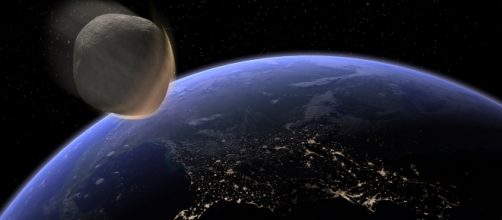Astronomy enthusiasts are bracing themselves for another one-in-a-million astronomical phenomenon. And this one will be really close to our world on September 1.
NASA has recently tracked another colossal asteroid, probably the biggest ever to pass by our planet. Florence will surely offer astronomy enthusiasts another rare treat right after the performance of Bonnie Tyler during the solar eclipse on Monday.
It’s going to be a different astronomical phenomenon
Florence is the name of the gargantuan asteroid named after an iconic female writer. Asteroid Florence measures approximately 2.7 miles wide according to NASA.
Scientists from NASA said that Florence is so far the largest asteroid, but not the closest to pass Earth’s orbit.
Paul Chodas, manager of NASA’s Center for Near-Earth Object Studies, said that “Florence is the largest asteroid to pass by our planet this close since the NASA program to detect and track near-Earth asteroids began.” Asteroid Florence, Chodas added, will pass by Earth with at a distance of 4.4 million miles. This is a safe distance and is around 18 times the distance between the moon and the Earth.
Getting to know Florence
Many wonder how close we are to asteroid Florence. One can get a sense of distance with Florence through an asteroid that visited our orbit earlier this year. According to Science Alert, asteroid 2017 AG13 zoomed within half the distance between the moon and the Earth.
being just 50 to 111 feet in size, asteroid 2017 AG13 appears to be a mere pebble compared to asteroid Florence.
Other asteroids to visit the earth in 2017
An even closer encounter than Florence is expected by NASA to take place this October. NASA says that asteroid 2012 TC4 will pass within just 13 percent (around 31,000 miles, of the distance between the moon and the Earth.
Asteroid Florence was first observed in 1981 by the scientist Schelte “Bobby” Bus. The observation was done in the Siding Spring Observatory located in Australia. Bobby named the asteroid after the founder of modern nursing, Florence Nightingale.
Not only space enthusiasts are becoming antsy by the moment, but also scientists across the globe are getting excited about the colossal asteroid’s appearance. They will finally have the opportunity to study Florence very closely.
Since 1890, the giant asteroid has not passed by the Earth this close. It will pass again after the year 2500 NASA reported.


